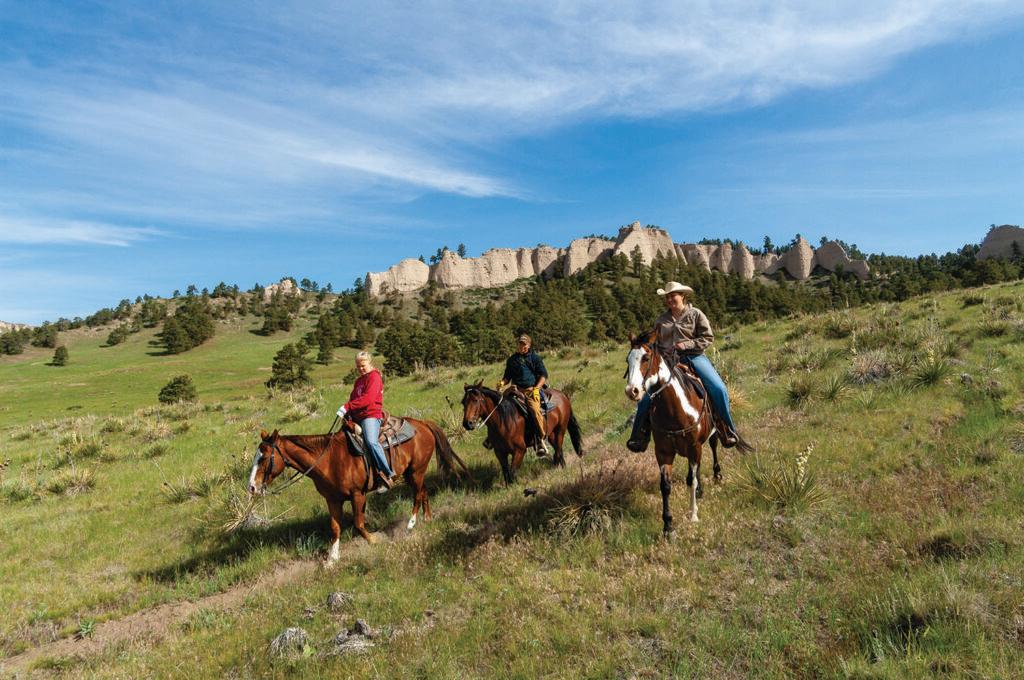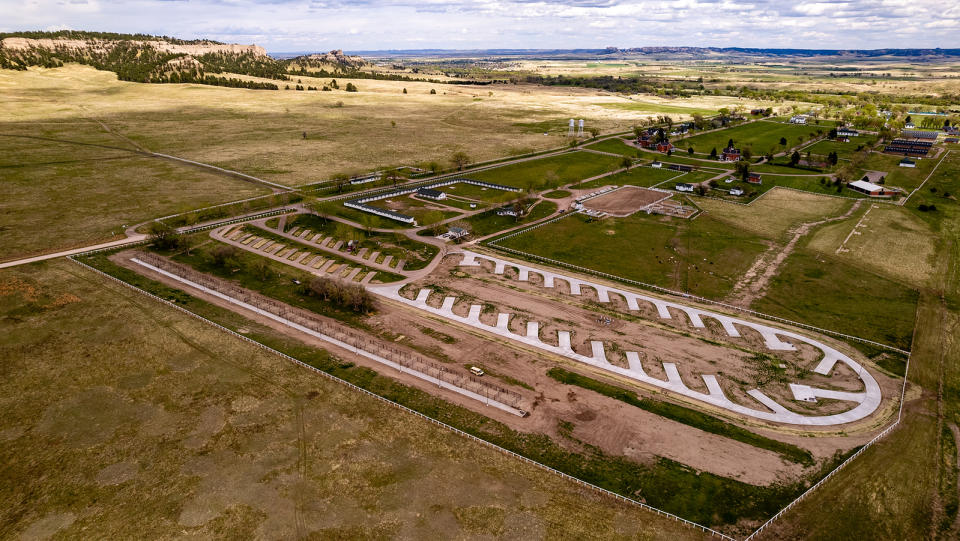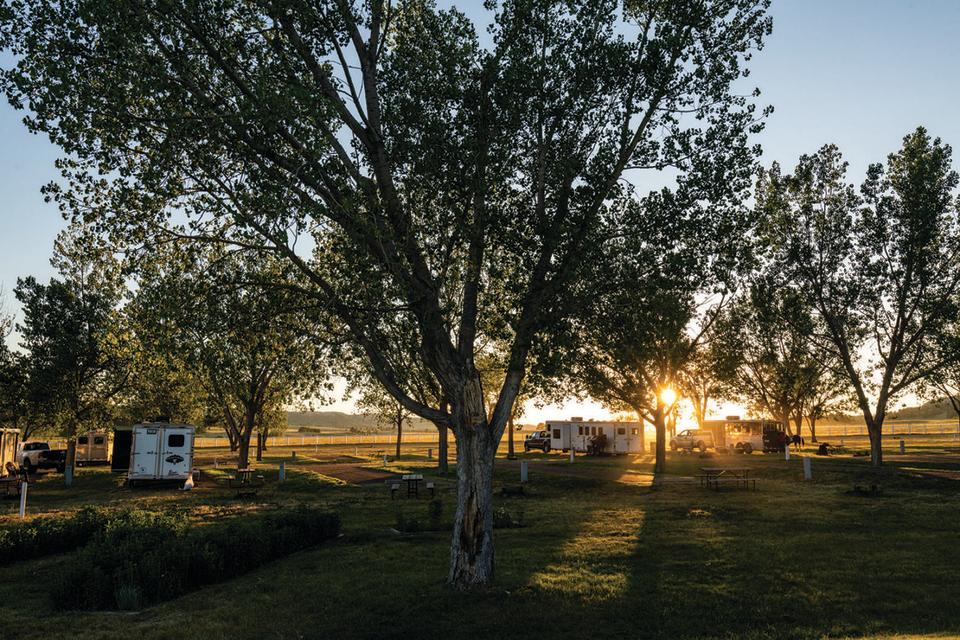$1.2M expansion set to open, bolster Fort Robinson State Park’s horse-riding profile

- Oops!Something went wrong.Please try again later.
Horse riders accompany a park guide on a horse trail ride to the top of Red Cloud Buttes at Fort Robinson State Park. (Courtesy of Nebraskaland Magazine/Nebraska Game and Parks Commission)
LINCOLN — A gallop for equestrian fans: The $1.2 million expansion of campsites and facilities for visitors traveling with horses is set to open this week at Nebraska’s Fort Robinson State Park.
The additions now double the capacity of the Mare Barn Campground, which is on the main park complex of the sprawling 22,000-acre Fort Robinson in northwestern Nebraska.
New are 24 campsite pads, paved large enough for a truck and trailer and equipped with hook-ups for electricity, water and sewer service.
Adjacent to the pads is a newly constructed 30-pen enclosure where horses can be stalled outside.
“We still need to add some trees and get the grass to grow, but the sites are ready for people to camp on them,” said Donita Morava, a superintendent at the park.

Half of the campground sites are available for reservations at OutdoorNebraska.gov and the others are first-come, first-served.
Already renovated in 2020 is the 20,000-square-foot main horse barn at the Mare Barn Campground, which offers indoor stalls. The new outdoor 30-pen addition is expected to be popular with visitors who want a place to put horses during their stay.
Morava said outdoor pens have long been requested by visitors, as some horses aren’t used to being indoors, especially in hot weather.
The Mare Barn facility originally housed broodmares when Fort Robinson served as a remount depot for the U.S. Army from 1919 to 1945.
Fort Robinson’s history with horses, both as a state park and its former role as a calvary base, make it an ideal attraction to cater to the rising popularity of equestrian activities nationwide, said Morava.
“It’s going to become increasingly popular as time goes on,” she said. “People bring their horses to experience the open spaces of the Pine Ridge.”
Fort Robinson is Nebraska’s largest state park, and offers two other campgrounds besides the Mare Barn Campground: Soldier Creek and Red Cloud.
It’s going to become increasingly popular as time goes on ... People bring their horses to experience the open spaces of the Pine Ridge.
– Donita Morava, Fort Robinson State Park superintendent
Historically, the area operated as a fort from the early days of the Old West until after World War II. According to the State Game and Parks Commission, it served previously as the Red Cloud Indian Agency, as a cavalry remount station, K-9 dog training center, POW camp and beef research station.
Established as a state park in 1962, Fort Robinson also was the site of the 1879 Cheyenne Outbreak and the death of famed Sioux Chief Crazy Horse.
Last year, the state allocated $20 million from excess state funds for improvements at Fort Robinson — with up to $2 million to go to efforts to honor the significant history of the Buffalo Soldiers, the all-Black regiments that served for 18 years at Fort Robinson.
The Black soldiers of the Ninth and Tenth Cavalry regiments were given the name “buffalo soldiers” by Plains Indian tribes because their black curly hair reminded the Native Americans of the coats of buffalos.
The Ninth Cavalry first arrived at Fort Robinson in 1885 and helped expand the new fort. According to History Nebraska, the soldiers served during the turbulent “ghost dance” period. They were transferred out later and relocated to the Philippines.

GET THE MORNING HEADLINES DELIVERED TO YOUR INBOX
The post $1.2M expansion set to open, bolster Fort Robinson State Park’s horse-riding profile appeared first on Nebraska Examiner.

